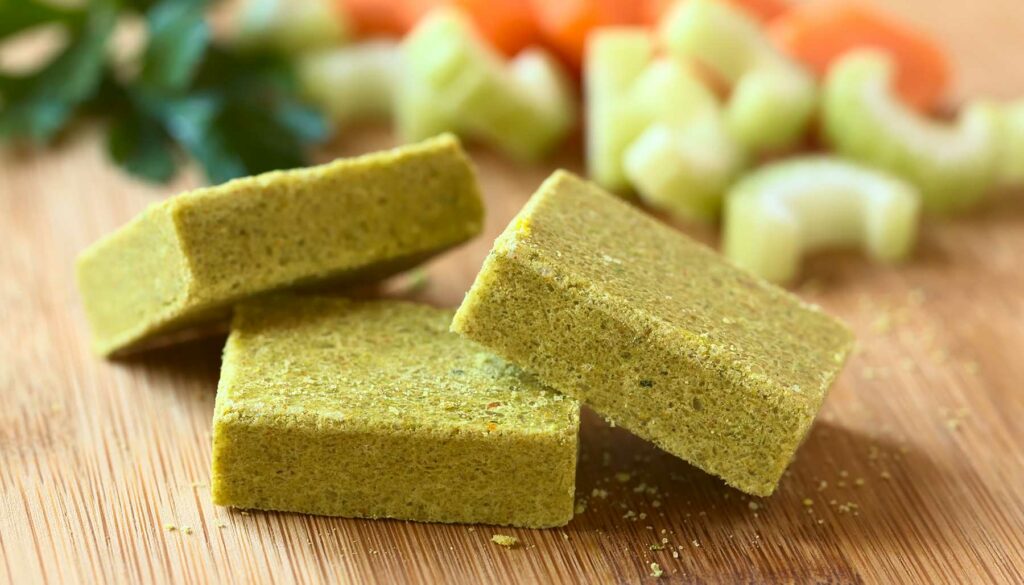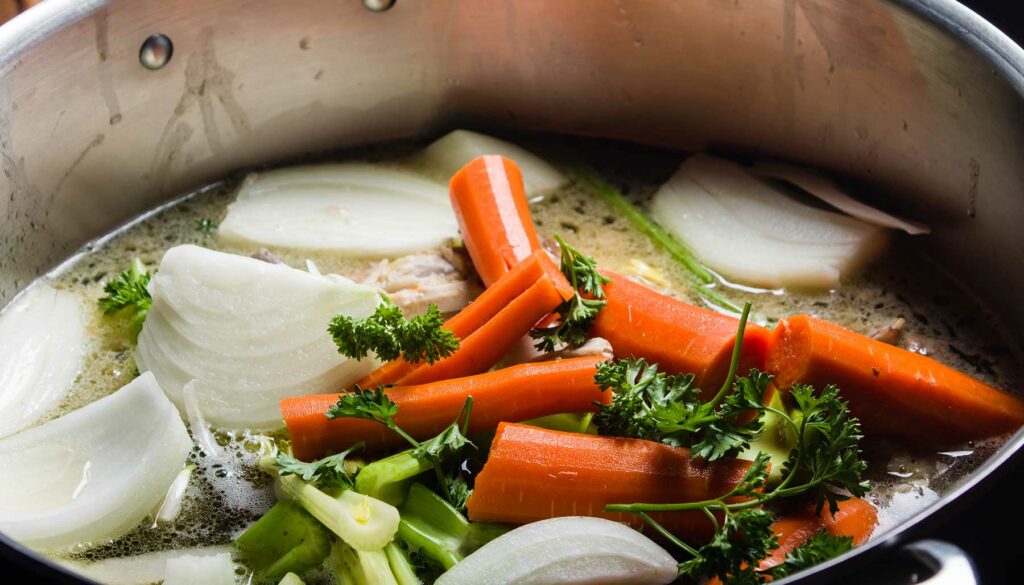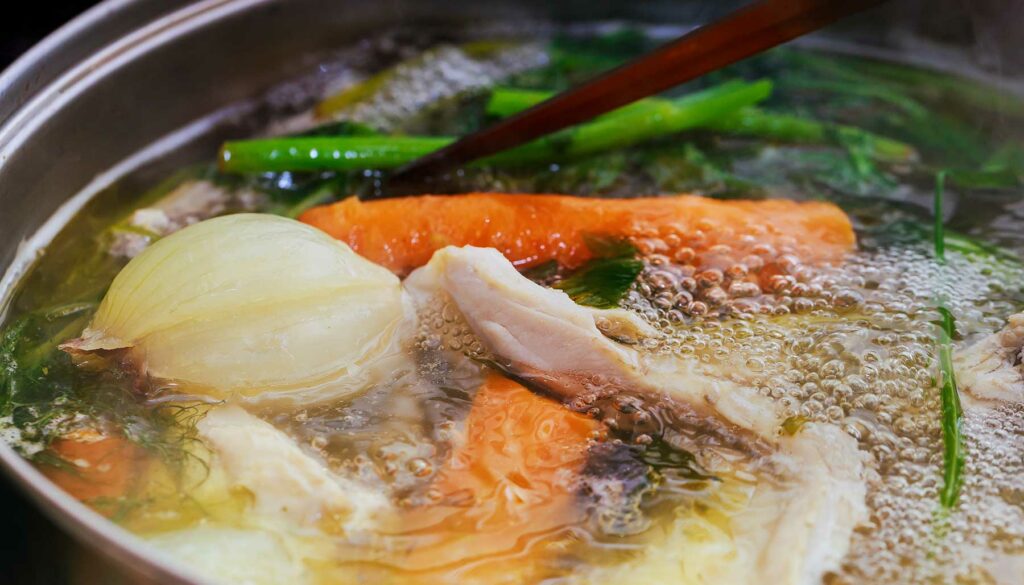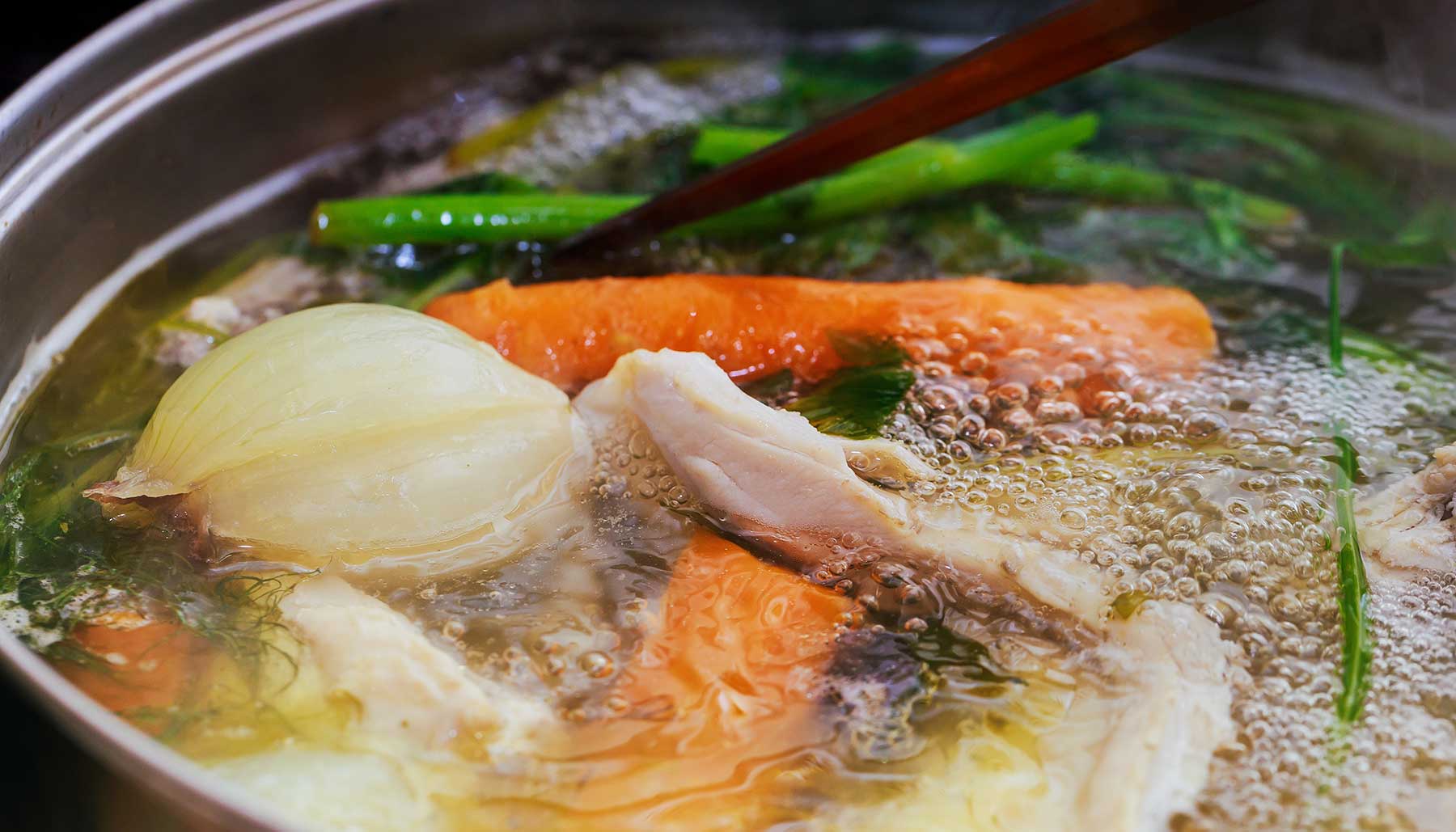When fall rolls around, a lot of people get excited for pumpkin spice everything.
This blend of cinnamon, nutmeg, cloves, and ginger has started popping up in just about anything you can think of. Pumpkin spice in coffee drinks is the obvious go-to for fall, but I have seen pumpkin spice cream cheese spread, almonds, several brands of breakfast cereal, beer, and Oreo cookies. If that isn’t enough for you, Goldfish crackers and even Nissin Cup Noodles have jumped on the pumpkin spice train.
(I don’t know how I feel about the pumpkin spice ramen noodles… I think we’re taking it too far)
Of course, there’s also the king of pumpkin spice: a good ol’ slice of pumpkin pie. This is what the spice blend was originally for before Starbucks’ PSL took over our taste buds.
Related: Five Pumpkin Spice Inspired Recipes to Try
But there is another star of the colder months, and it’s something that I love even more than pumpkin spice.
It’s soup season!
As soon as that chill hits the air, I am ready for a warm, hearty bowl of soup to warm me up from the inside out. You could say that I am shifting into soup mode…

I’m sure there are some difficult-to-create soups across the globe, but most of the soups and stews we make in our homes are pretty easy. We sautee or brown ingredients, add liquid, and let it simmer. Bam! You’ve got some tasty soup.
Related: Try Out These Five Healthy and Hearty Soup Recipes That Are Sure to Warm You Up
But there’s one part of a soup recipe that might leave you confused. Why do some recipes call for broth, while others call for stock? If it calls for broth, can you use stock? What about bouillon cubes? Do we even know the difference between these products?
These ingredients are all different from each other, although the differences might be more subtle than, say, the difference between an apple and an orange. Even still, each one has its own best uses.

What Is the Difference Between Broth, Stock, and Bouillon?
First, let’s talk about what each of these three things is, by definition.
Broth is made with meat, cooked vegetables, or a combination of both. The savory liquid is made by simmering the ingredients, and then straining the liquid from the meat or veggies when it’s done. It leaves you with a liquid base that will add flavor to your dishes. Making broth is a great way to use up vegetable trimmings that you otherwise wouldn’t use, like carrot tops and kale stems.
Stock is similar to broth, but it is usually made using animal bones. That’s why it is sometimes referred to as bone broth. Beef and chicken bones are the most common ones to use for making stock, and the flavor comes from the bone marrow, cartilage, and any connective tissues remaining. The collagen is converted into gelatin during the cooking process, which thickens the liquid. Stock is simmered for a much longer time than broth.
Bouillon is technically the French word for broth. These two terms are sometimes used interchangeably. In classical French cooking, bouillon refers to a highly flavored broth or stock. But for our purposes, we’re talking about bouillon the ingredient, a dehydrated form of broth or stock. This concentrated product can come in many forms: cubes, powder or granules, pastes, and concentrates. Outside of soups and stews, bouillon is also used to add concentrated flavor to meats and vegetables without the added liquid.

When to Choose Broth, Stock, or Bouillon
Now that we know what each of these products is, how do we know when to use them?
For the average home cook, any of these three products can often be used interchangeably. In most cases, it is just fine to use any of the three. If you happen to keep broth on hand and a recipe calls for stock, you can use the broth instead. Just make sure you adjust the recipe to compensate for any missing flavors or additional salt.
In general, broth is a better choice when you want to let other flavors in the dish shine. It is usually less robust, though it does usually have more sodium included. It’s the best choice for broth-based soups – as if you couldn’t guess that from the name!
Bouillon is essentially a more concentrated version of broth. Add water, and you can use it anywhere you would use broth, too. These products often last a lot longer than broth, so these are a good choice for people who never finish using a whole container of broth before it goes bad. Bouillon also has the added benefit of flavoring other kinds of dishes, outside of soups and stews. For instance, you can add a bouillon cube to stir fry without the additional water for a boost of concentrated flavor.
Stock has all that gelatin and protein in it, and it simmers for a lot longer. You can expect a deeper, more rich flavor from stock, and it tends to have a little more body to it. Just like with gelatin in other applications, it also thickens up stock a bit. Stock is significantly higher in vitamins and minerals than broth and bouillon, and it also contains more fat, carbs, and protein.
How to Make Your Own Broth
Store-bought options are readily available, and there is definitely nothing wrong with using them in your recipes. However, if you want to create your own homemade broth, it is really easy. Plus, it’s a great way to use up kitchen scraps that you would otherwise toss.
This is a basic vegetable broth recipe. Like I said, it is really simple to create broth. You are essentially just throwing chopped veggies into a pot and letting them cook! You can easily get creative and use whichever veggies you would like. And if you are hoping to make chicken or beef broth, it is made the same way. Simply add meat along with veggies into the pot.

Ingredients:
- 1 medium onion, peeled and quartered
- 2 medium carrots, roughly chopped
- 1 stalk of celery, roughly chopped
- 4 ounces of mushrooms, halved
- 2 bay leaves
- 3 to 4 cloves of garlic, smashed and peeled
- Salt and pepper
- 8 to 10 cups of water
- 2 to 3 tablespoons of olive oil
- Optional: any leftover fresh herbs
We will be straining the vegetables out at the end, so you don’t need to pay much attention to how they are cut. Just wash and roughly chop them.
Heat the olive oil in a stock pot. Add the vegetables and saute for 5 minutes. Cooking the vegetables first before simmering will bring out more flavor, making your finished broth that much tastier!
Add the water to the pot, along with the bay leaves, salt, and pepper. Bring it to a boil, then reduce to a simmer and cover the pot with the lid.
Let this stay at a gentle simmer for about an hour, covered.
Once it is done, remove the bay leaves and strain out the vegetables and garlic cloves. You can use it immediately, or store it in the refrigerator for 4 to 5 days. It will also keep in the freezer for about 6 months.
How to Make Your Own Stock
Okay, what about stock though? Just like with broth, you can easily pick up some readymade stock at the store. However, you can also create your own broth at home. This gives all those leftover bones new use in the kitchen. And since you were going to throw the bones away anyway, stock is basically free to make.
Many times, vegetables and herbs will also be used to create stock to give it some added flavors. This can just be kitchen scraps you have left over, just like you would use to create homemade broth.
This recipe is for chicken stock, but stock made with other kinds of meat is just as easy to prepare.

Ingredients:
- Leftover bones and skin from 1 large chicken
- 1 large celery rib, roughly chopped
- 1 carrot, roughly chopped
- Salt and pepper
- 1 bunch of fresh parsley (rosemary, thyme, sage, other herbs are good options, too)
- Water
Just like with broth, we will be straining the liquid at the end, so you don’t need to pay attention to how the vegetables are cut. Just wash and roughly chop them.
Add the chicken bones and skin, chopped vegetables, and herbs to a large stockpot. Fill the pot with enough water that your chicken and vegetables are completely submerged.
Cover the pot with a lid and bring to a boil. Reduce heat to low and let it simmer, partially covered, for at least 4 hours. Every so often, skim off any foam or excess fat that comes to the surface.
Once the stock is done cooking, strain out the herbs, vegetables, chicken skin, and bones. You can use the chicken stock immediately, or let it cool and then store it in the refrigerator for up to 4 days. Freeze the stock in airtight containers, and it will keep in the freezer for 4 to 6 months.













